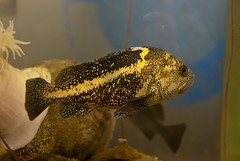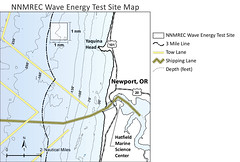PORT ORFORD – Ocean Frontiers, a new feature-length film about ocean management and conservation, will launch its national tour in Port Orford, which stars in the film as an example of how science and fishing can work together to manage marine resources.
The debut screening starts at 5 pm Saturday, Feb. 11 at the Savoy Theatre in downtown Port Orford. followed by a reception in the nearby Community Building, with Oregon Governor John Kitzhaber, First Lady Cylvia Hayes, representatives of state and local government and members of the Port Orford Ocean Resource Team (POORT) expected to attend. A second screening is scheduled for 4 p.m. Sunday.
Tickets are $10 and are available only online, at www.oceanfrontiersportorford.eventbrite.com
The film will also be shown at the Performing Arts Center in Newport at 7 pm Feb. 22.
Port Orford is one of several US coastal communities featured in the 80-minute film, which tracks the evolution of marine resource management from a “maximum allowable catch” approach to a growing recognition that resources are finite, and need to be managed for the future as well as the present. The film explores the shift toward ecosystem-based management and marine spatial planning tools that rely on science, and an informed and engaged public. Communities from the Pacific Northwest to Boston Harbor, the Florida Keys, the Gulf of Mexico and even the cornfields of Iowa are featured.
POORT figures prominently in the film as an example of how resource users, scientists, conservationists and others can work together to help understand, protect and manage ocean areas for the benefit of the resource – and the people who depend on it. Ongoing collaboration between fishermen and scientists in the south coast community was a strong factor in the state’s decision to establish one of Oregon’s first marine reserves at Redfish Rocks, just off Port Orford.
Oregon Sea Grant has supported the community-based effort since its early days, helping bring fishermen and scientists together and providing information and assistance as the group grew and evolved. Sea Grant helped the community design and conduct surveys and interviews that let the town build its first long-form community profile to give resource managers greater insight into how fisheries reach deep into the community’s social and economic life. The format and interview has since been applied to other Oregon coastal towns, and is proving to be a model for communities elsewhere in the US.
Learn more:
Watch a 10-minute trailer for the film:







